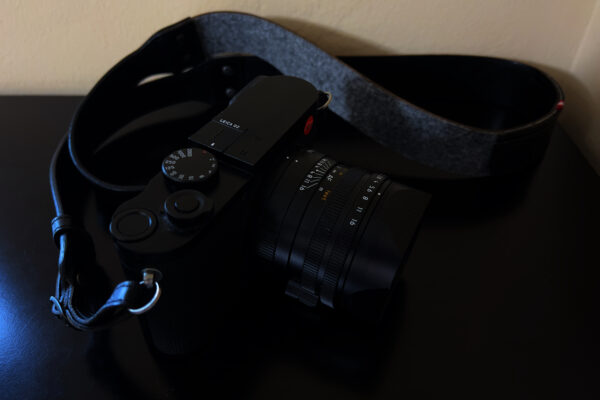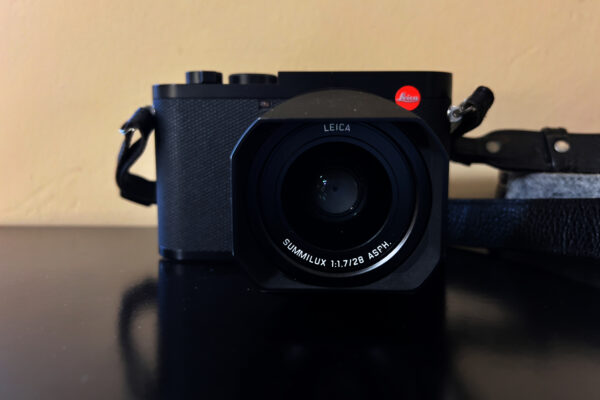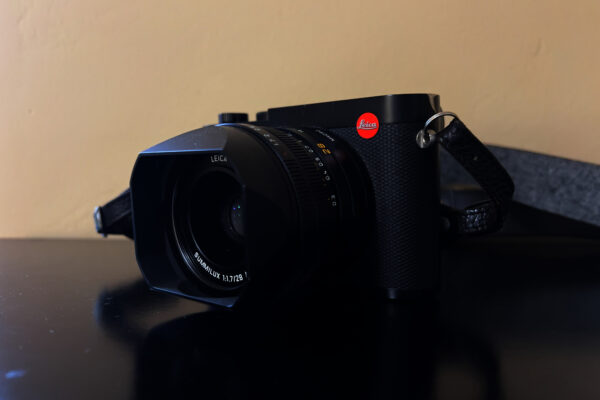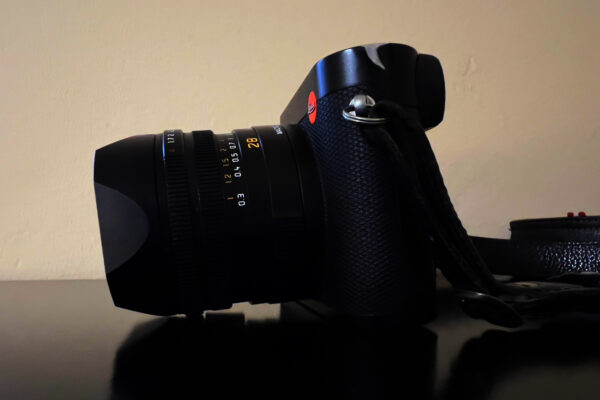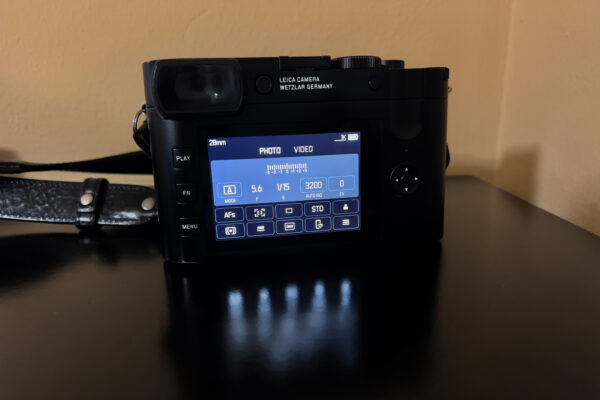On the last day of 2019, UPS delivered Leica Q2, which would replace the original model that I acquired in May 2017. I was wholly satisfied with the Q, but the allure of higher resolution (47.3 megapixels vs 24MP) and weather sealing led to a sudden sale; Craigslisting two cameras, including the Q, covered the purchase price.
If being psychic, and foreseeing what 2020 would bring, I likely would have stuck with the Q for awhile longer. A series of oppressive and overly-restrictive governor-ordered lockdowns imposed in attempts to curb the COVID-19 pandemic caused by SARS-CoV-2 (severe acute respiratory syndrome Coronavirus 2) made for a difficult street shooting year. With most of California shut down for so much of 2020—and citizens ordered to simply stay home—the Q2 was largely relegated to shooting alleys, empty storefronts, and cats.
While 2021 began with the COVID crackdown still in place, but the state partially reopened by mid-year, I didn’t wait. On January 1, I set out to write something every day and as much as possible use one of my photos as focal point for the storytelling. Images from Leica Q2 appear in 217 of the 367 posts. Still, with society far from normal, too much of my shooting focused on things, rather than people.
Even as the Omicron variant rages, with news media and political doomsayers raging about the end of everything, 2022 promises to be more of a return to normalcy. I hope to get out on the street and document something more meaningful than alleys and cats. If you’re thinking the same way about photography, but don’t own the Leica or wonder about upgrading from the Q, please read on.
Brief Introduction
The Q family defies convention by being highly-capable, but comparatively pricey, all-in-one-designs loaded with benefits that matter to photographers. Both generations are largely functionally equivalent, sporting integrated, fixed lens (28mm f/1.7 Summilux); full-frame sensor (rather than APS-C); manual control dials; built-in Macro mode; and dedicated manual focus as alternative to fast and accurate autofocus. Should you happen to be choosing between both and your budget is tight, consider the older camera, which is affordable enough (if such a thing can be said about any Leica) new or used.
The value proposition is simple: Leica lenses are ungodly expensive—some are in the used car price range. Consider the Summilux-M 28mm f/1.4 ASPH, which sells for $1,800 more than the Q2. The Q family’s f/1.7 is magnificent glass that delivers edge-to-edge sharpness across the focal range. Think of the purchase as an investment in a fantastic lens and getting a drool-worthy camera for free.
But do understand what you buy. It is an integrated package—meaning the glass isn’t interchangeable. The 28mm lens is either liberating or limiting, depending on expectations. If you need a different focal length—for example, 14mm or 90mm—read no further. This camera isn’t for you. Liberation comes different ways, such as freedom from temptation to buy more lenses.
A fixed-lens camera is unconventional, which is why the selection of models available from major manufacturers is so few. The easy, reasonably affordable, single focal-length option is your smartphone. Even so, Fuji, Ricoh, Sigma, and Sony all produce digicams of similar non-interchangeable lens limitation. But the combination of features and benefits derived from the right ergonomics and Prime can make the fixed-lens mirrorless an outstanding choice for street photography. That said, most enthusiasts or professionals would use this kit as a secondary camera. I am atypical for making it primary—and only.
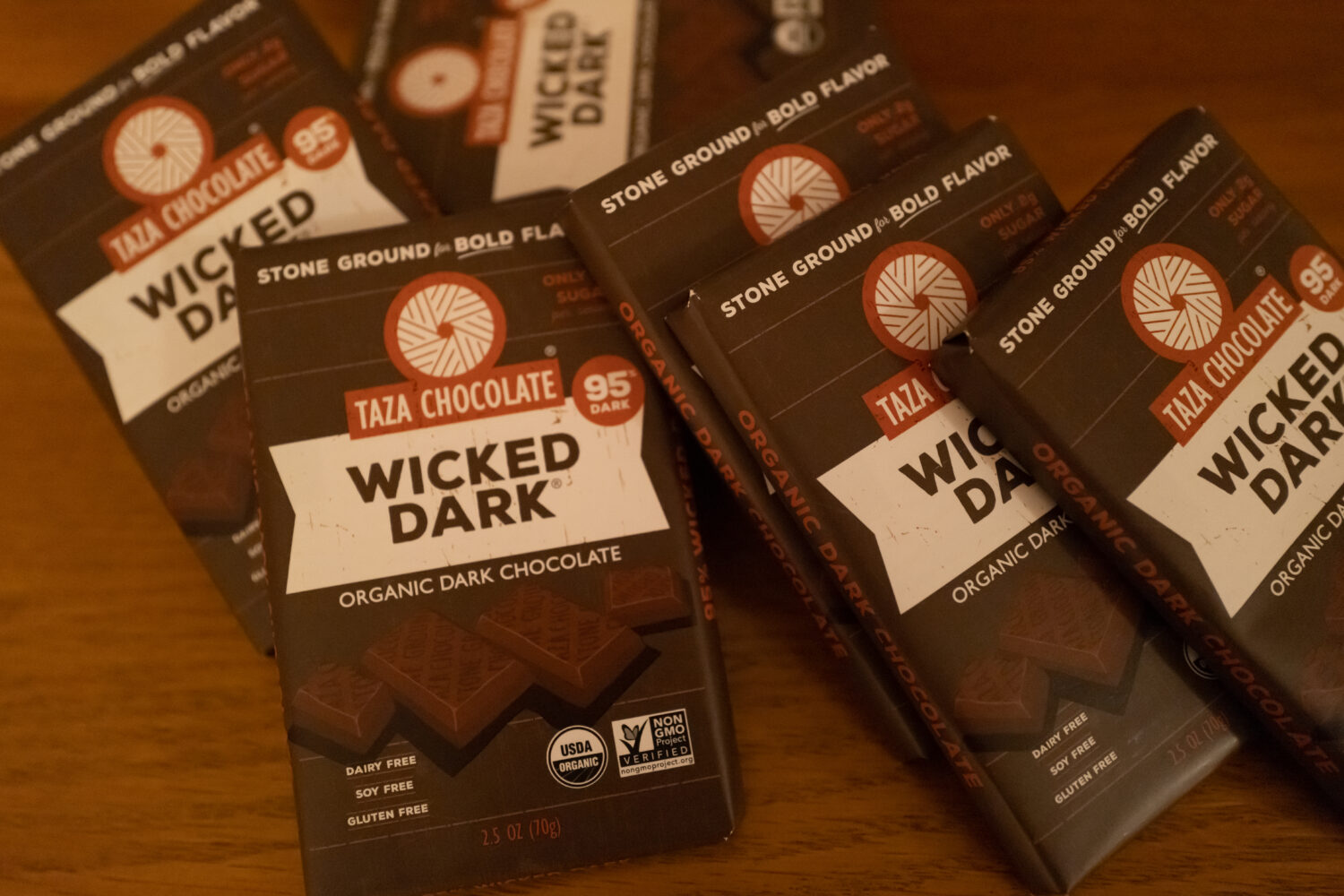
“Wicked Good” f/2.8, ISO 10000, 1/125 sec, 28mm (Macro)
Think of the Leica Q family’s one-size-fits-all design as an acquired taste—kinda like Taza 95% Wicked Dark chocolate. The sensory experience is satisfyingly rich but not without giving up some sweetness. The Q2 can be operated in auto-mode, but the real benefits come from adjusting dials to get what you want from each and every shot. This ain’t Hershey’s chocolate. But bitter bars come with robust flavor—and simplicity. Q2 doesn’t overwhelm with unnecessary features; overall usage experience is tactile and intimate.
Photography isn’t about device features, or even technique, but relationship, finding a camera that makes you want to shoot with it—that is a joy to use. For me, Leica Q2 is satisfying and fun. But I also prefer dark chocolate. Do you?
Surely somebody buys all-in-ones and is willing to pay dearly for the privilege. Two years ago, my Q2 cost $4,995. On April 1, 2021, Leica raised the price, which currently is $5,695. Since my purchase, two different James Bond special editions released and sold out. Q2 Monochrom remains available for $6,195 and the new Reporter model, with Kevlar covering replacing leather trim, is available for pre-order; limited quantities, $5,995. That’s five different members of the Q2 family since launch. What does that tell you?

“Fuzzies” f/5.6, ISO 100, 1/80 sec, 28mm (Macro)
For Whom and Why
That’s good segue to discuss for whom Leica Q2 isn’t the best choice; which, honestly, means most people:
- Anyone wanting two SD Card slots
- Everyone who needs to use more than one lens
- Photographers looking for flip-out rear LCD screen
- Budget-minded shoppers who don’t mind lugging around a larger body and lens(es)
- Shooters who don’t want to be locked into wide-angle view (e.g., 28mm film equivalent)
- Anyone who hears terms like aperture, exposure compensation, or ISO and goes “Huh?”
By contrast, the Q2 could be right if you want to:
- Take full control over shooting settings
- Solely use a Prime lens; you are the telephoto
- Shoot stealthily (the leaf shutter is nearly silent)
- Get fast, accurate auto-focus and superior image quality
- Have fully manual Macro and focus options that are sensible
- Use a compact camera with manual dials and full-frame sensor
No member of the Q family is right choice for everyone, and that really means most anyone. Remember: All-in-one built around a non-changeable Prime lens.

“Momma Bears” f/5.6, ISO 100, 1/125 sec, 28mm
Expert Opinion
Before moving along to a lengthy discussion of the Q2’s top-line benefits, I want to draw your attention to other reviews—all from people with greater qualifications than me. I am not a professional photographer, nor conceited enough to look at my images and pretend to be. For me, photography is a means for storytelling or for its illustration.
Writing for National Geographic, Tim O’Brien chooses the “best compact cameras for 2022“; Leica Q-P, Q2, and Q2 Monochrom make the list. He writes in part:
While the venerable Q series cameras are anything but affordable, they are wonderful to use. If you can overcome the price, these cameras reward in spades.
Strongly suggested reading, before buying:
- “Leica Q2 Review“, Eric Kim
- “The Leica Q2“, Jonathan Slack
- “Leica Q2 Sensor Review“, DXOMARK
- “Leica Q2 Professional Evaluation“, Kristian Dowling
- “Leica Q2: A Street Photography Review“, Eolo Perfido
- “The Leica Q2 hands on review |The Q Perfected?“, Keith Wee
- “The Leica Q2 Real World Review and Experience. Worth the $5k?“, Steve Huff

“Happy Family” f/4, ISO 100, 1/400 sec, 28mm
Kim calls the camera “epic”:
The Leica Q2 is one of the most thoughtfully designed cameras I’ve ever used, and I think it is definitely worth the $5k price tag. In fact, I think the Leica Q2 is an ultimate camera—no downsides.
Top-line Benefits
Thanks to how technology is marketed, potential and real users tend to overly obsess about product features. They’re meaningless, if not useful to you. Benefits matter more, and that is something Leica clearly understands in its overall design ethic—regardless of camera. Don’t confuse the two as being the same. My favorite analogy: The holder that wraps around your take-out cup of hot coffee is a feature. Protecting your hand from being burned is the benefit.
Among the features and their benefits that matter to me (and hopefully to you):
1. Ergonomics. The simple, straightforward, and practical design delivers exceptional ergonomics. Little touches tell the story. For example, Leica Q2’s menu system is among the best I’ve used; it’s amazingly and straight-forwardly intuitive. But relying on manual controls (see No. 3), I rarely need to access it.
Build-quality is exceptional, which subtly but directly contributes to ergonomic impressions and how it emotionally feels to handle and interact with the camera.
I will discuss other ergonomic benefits, separately (see numbers 3, 7, 10, 13, 15).
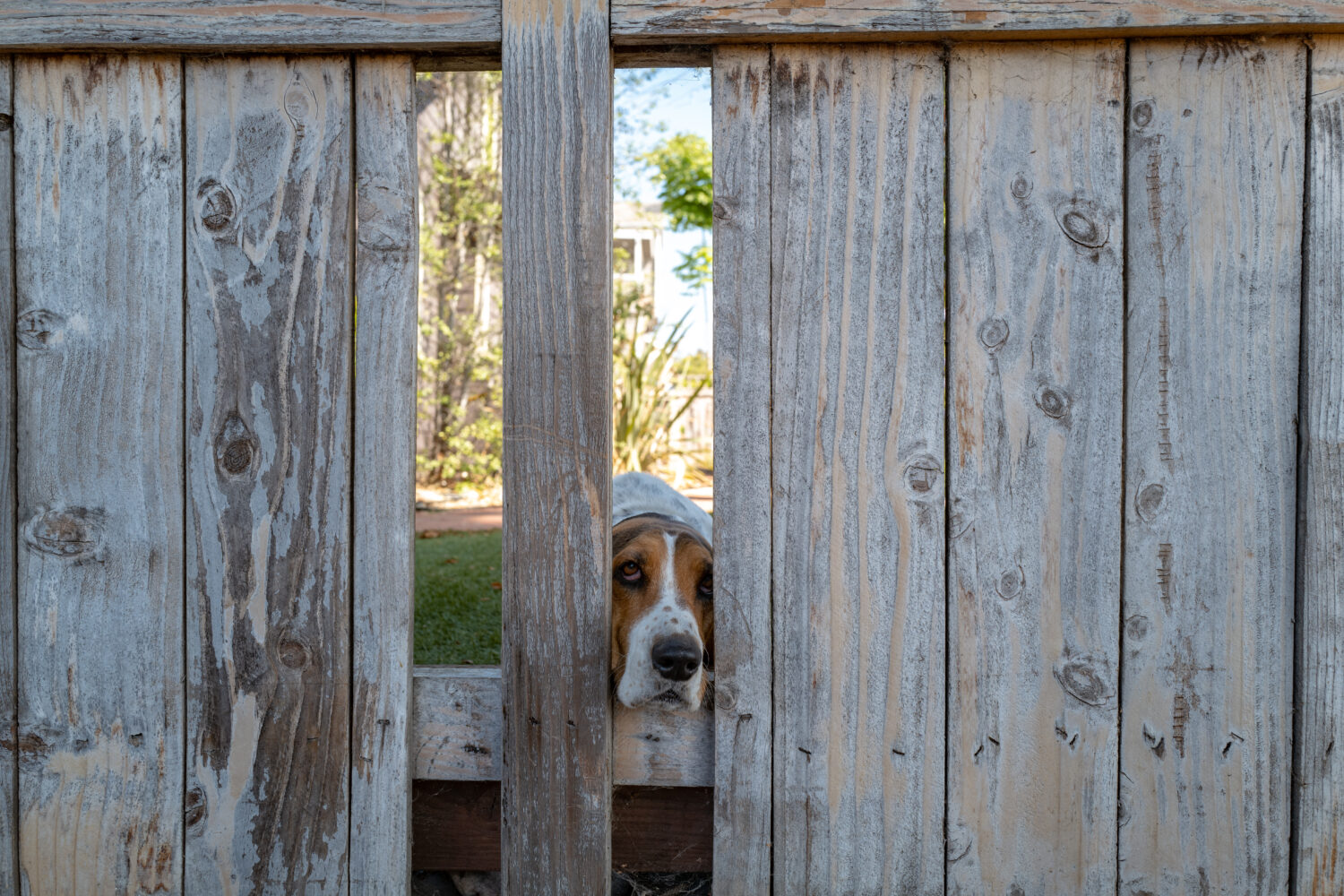
“Sybil” f/5.6, ISO 100, 1/125 sec, 28mm
2. Amazing balance. In good design, balance is everything—and Q2 delivers in the two ways that matter: How the device feels/handles and the way features combine together—the aforementioned ergonomics. Leica smartly stuck to the design ethic that defined the original camera.
Physical balance is hugely important to digital cameras, because of how they are handled. Leica Q2 is remarkably balanced, and surprisingly so, since it isn’t a small compact—mostly because of the size of the lens. Overall dimensions: 130 x 80 x 91.9 mm (5.12 x 3.15 x 3.62 inches). Heft is significant from the magnesium alloy body and the lens, which extends, with hood attached, about 65mm (2.6 inches) from the body (figure is based on my own inexact measurements). The kit weighs 718 grams (1.58 pounds).
More broadly, one word describes bringing together the sensor, lens, auto-focus, low-light capabilities, and overall consistency of colors and contrast among the photos: Reliability. Next to the original, Leica Q2 is the most reliable camera that I have ever used. As such, I can trust that most images will come out as my eyes see them and that nearly all will be usable. Trust isn’t a word often applied to digital cameras, but it must to Leica Q2. Trust/reliability is the single biggest benefit that wouldn’t be if not for precision of the design and ergonomics and how these and other attributes balance together.
This quality, when married to the 28mm perspective, means that I can focus on composition, whether thinking about the shot in the moment or how to crop-in later on.
Something else: Over time, I have come to take one shot and move on. In those rare cases where I shoot several photos, almost always the first is the best. The camera becomes an extension of my mind and eyes such that compose, focus, and click is reflexive and intuitive. None of that would be possible if the balance of features and benefits didn’t lead to trust.
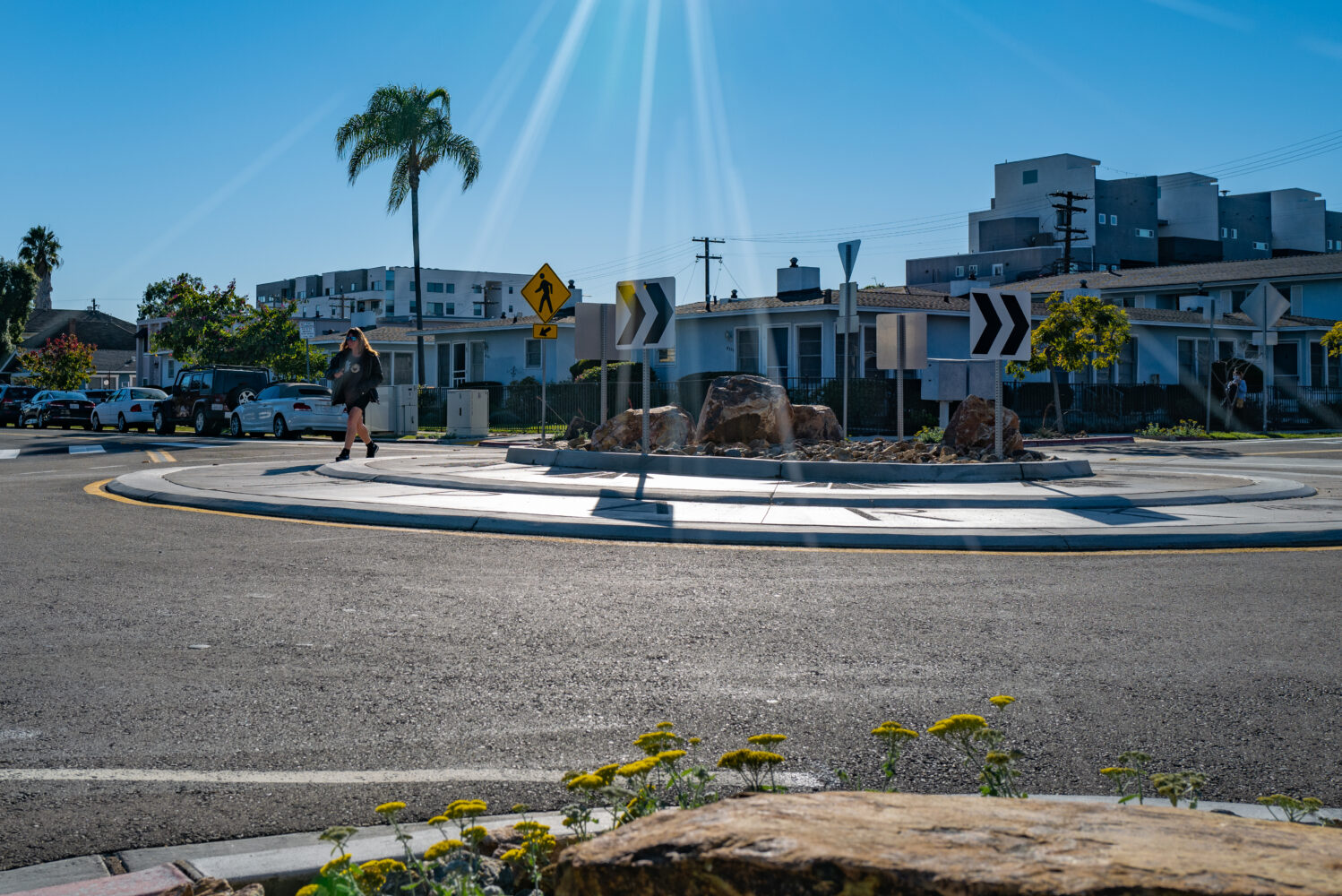
“Roundabout Runner” f/5.6, ISO 100, 1/1000 sec, 28mm
3. Dedicated dials. In the realm of digital, mirrorless cameras, Fujifilm and Leica share in common ergonomics that emphasize manual controls. Leica Q2 has dedicated dials for shutter speed (on top of the body next to the power switch); customizable, unmarked buttons preset for exposure compensation, framing (see No. 7), and ISO (see No. 15); and f/1.7-f/16 aperture, manual focus, and Macro rings around the lens barrel.
Nearly all the controls are easily accessible and intuitive. That said, I am disappointed that Leica removed the single- and continuous-shooting modes switch built into the on-off button of the Q. I miss the quickly accessible continuous option.
Gripe: No joystick, which for anyone familiar with Fuji could be frustrating. The doohickey is handy for quickly and effectively changing point of focus. Leica’s choice of button-wheel works but would be much more ergonomic if a joystick.
4. Full-frame sensor. Physical size is 36mm x 24mm—that’s 35mm format, or film equivalent. DNG images coming off the 47.3-megapixel sensor measure 8368 x 5584 pixels. For anyone counting them (and you shouldn’t), number of megapixels matters much less than does sensor size.
Photos are artifact-free across the entire range. The captured detail and vibrancy of the colors are breathtaking for an all-in-one. This is a super IQ shooter, but the sensor is only part of the reason why.
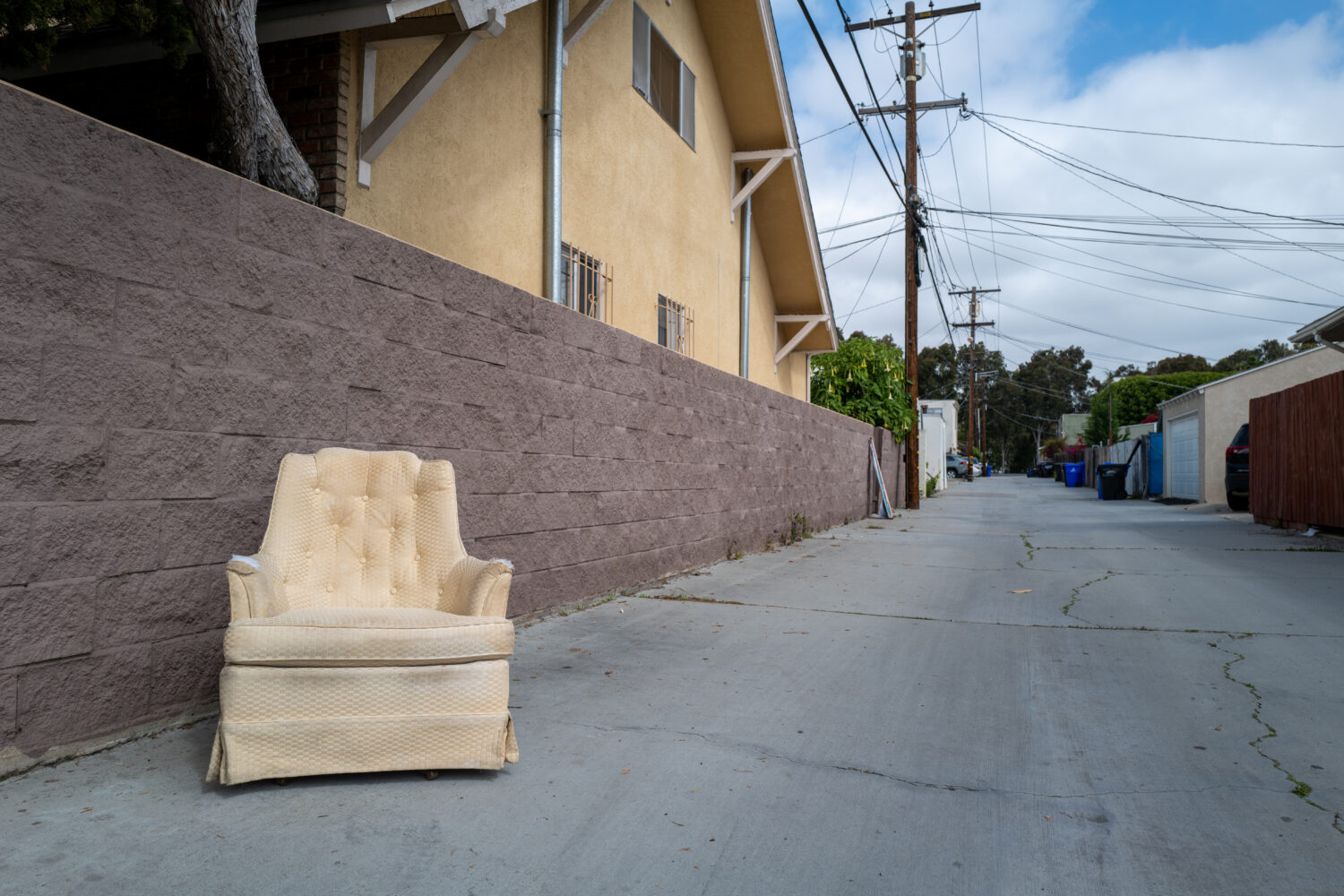
“Alley Chair” f/5.6, ISO 100, 1/640 sec, 28mm
5. Fixed lens. A sensor is only as good as the lens, and the Q2’s f/1.7 Summilux delivers super sharpness across the focal range. This is a prime’s Prime that gives great clarity regardless of shooting conditions.
One advantage of a Prime lens matched with a full-frame sensor: There is so much captured clarity that you can close-crop without losing detail. That affords some of a telephoto’s get-in-close benefits without imposing the typically, accompanying photographic aberrations caused by the mechanical elements.
6. Wide-angle perspective. The 28mm, which is film equivalent, won’t win over everyone. But, hey, if you shoot anything with an iPhone, its puny sensor and primary lens puts out 26mm film equivalent. The perspective should be familiar enough.
If you’re photographing people, particularly on the street, the 28mm lens demands getting in closer to the subject. This is an intimate street shooter. A camera with attached telephoto can create sense of intimacy but keep you discreetly away. Leica Q2 wants you to close the distance with the subject.
7. Framing selector. This isn’t an option I use often, but it is handy—especially for anyone finding 28mm being too wide. On the back of the camera below the shutter speed dial—easily and comfortably reachable with thumb when looking through the viewfinder—is a button that changes the frame lines to 35mm, 50mm, or 75mm perspective. Think of it as a pseudo-digital zoom by way of cropping the field of view—also reducing size of the file: 35mm (30MP); 50mm (14.7MP); 75mm (6.6MP). The crop lines are artificially placed, so to speak, for post-production, meaning: The original photo remains.

“Hamlet” f/8, ISO 160, 1/125 sec, 28mm
8. Electronic viewfinder. When given the choice between an EVF or optical viewfinder, I invariably would choose the latter option. But few mirrorless cameras offer it. Exceptions are the Fujifilm X100 and X-Pro series, which pack both. User can choose digital or optical VF and quickly switch between them.
That said, the Q2’s 3.68MP OLED EVF is bright and crisp. I would prefer OVF for framing but can’t complain about the electronic option. That said, I changed the default setting and adjusted brighter, because of my need to wear sunglasses on the many sunny San Diego days.
Fixed: The diopter knob for the original’s EVF was too easily knocked out of place. Particularly before going out street shooting, I felt obliged to check that the viewfinder was readable and to make any needed adjustments. The Q2’s diopter knob locks in place, permanently solving the previous generation’s usability glitch. Thank-you, Leica!
9. Fast, accurate auto-focus. Leica Q2’s swift and precise auto-focus surprises, since this isn’t an action-oriented camera. I have fewer bad captures with this camera than any other, except for its predecessor, and that includes when shooting in (most) low-light situations.
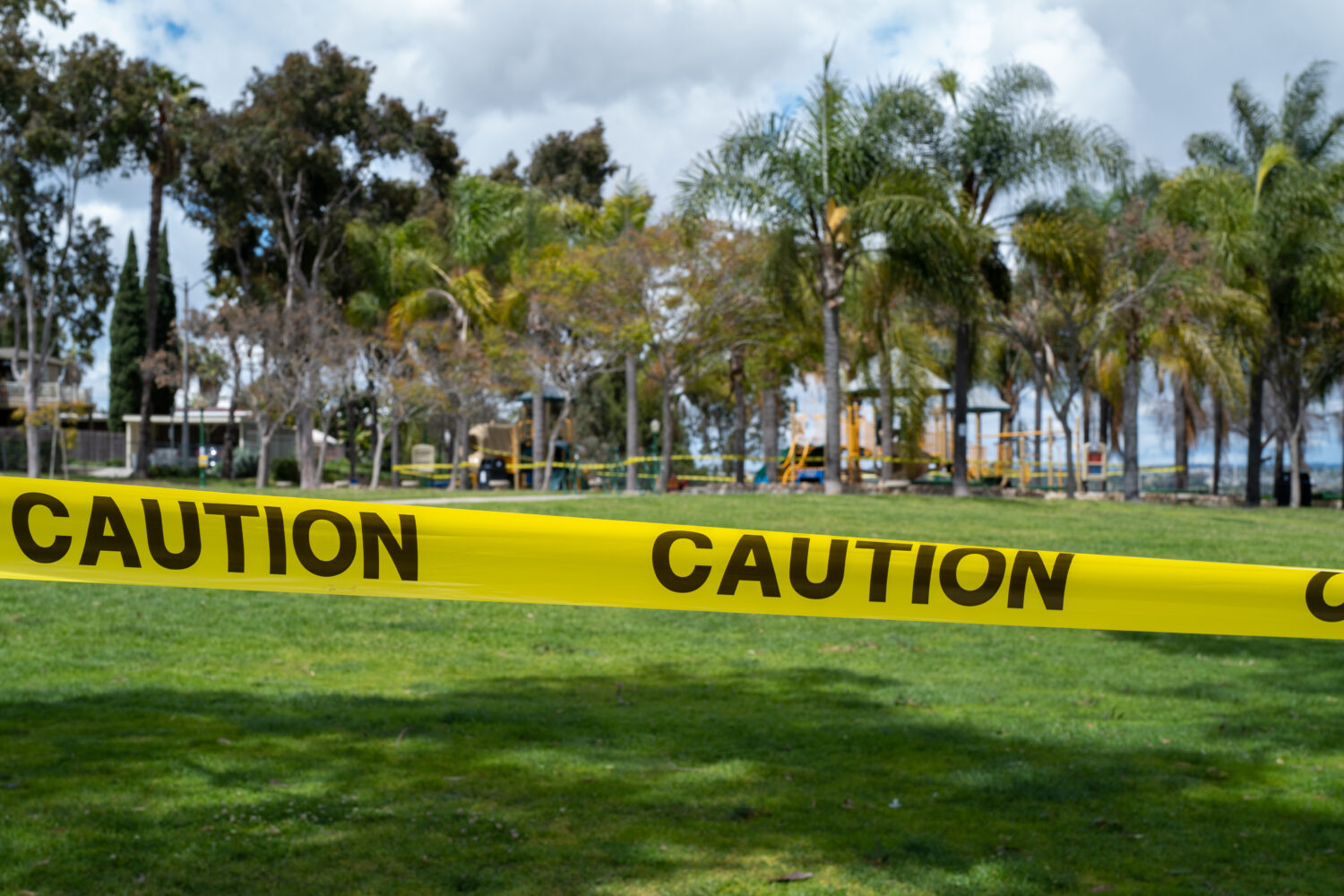
“Let the Kids Play” f/8, ISO 100, 1/160 sec, 28mm
10. Manual focus. Borrowing design heritage from Leica rangefinders, the Q2 provides pinpoint accurate manual focus from a ring around the lens barrel. (There are three rings. Aperture is closest to the glass and Macro to the body.) Manual focus is controlled from a knob, with a notch that when pressed unlocks the feature. Turning the knob magnifies the subject object in the viewfinder so that you can fine-tune the focus before pressing the shutter. Focus peaking aids the eye’s perception by visually shimmering around the subject.
When I have the most time to compose a shot or when capturing crowded scenes where auto-focus might lock onto something not wanted, I will go manual. The value of manually focusing when shooting fast aperture cannot be overstated. The 28mm f/1.7 lens gives great bokeh, but with shallow depth of field the focal point must be just right—especially if you plan to close-crop, in post production.
Leica rangefinder photographers are accustomed to manually focusing, because there is no other option. I see the appeal to them. The more often I use manual focus, the less likely I am to go auto. Auto-focus increasingly is for the immediate moment that I don’t want to miss. Manual is for more deliberate, thoughtful composition. But, as I get more proficient, manual focus’ appeal increases.
11. Silent shutter. Like the Fuji X100 series, Leica Q2 serves up a rare treat: Leaf shutter, which by design must be part of the lens. For street shooters, the feature is one of the fixed-lens camera’s primary advantages, because leaf shutters are nearly silent—for Leica Q2, through 1/2000 sec (for faster shutter speeds, truly silent; digital shutter takes over).
Think: Paparazzi. That’s you.
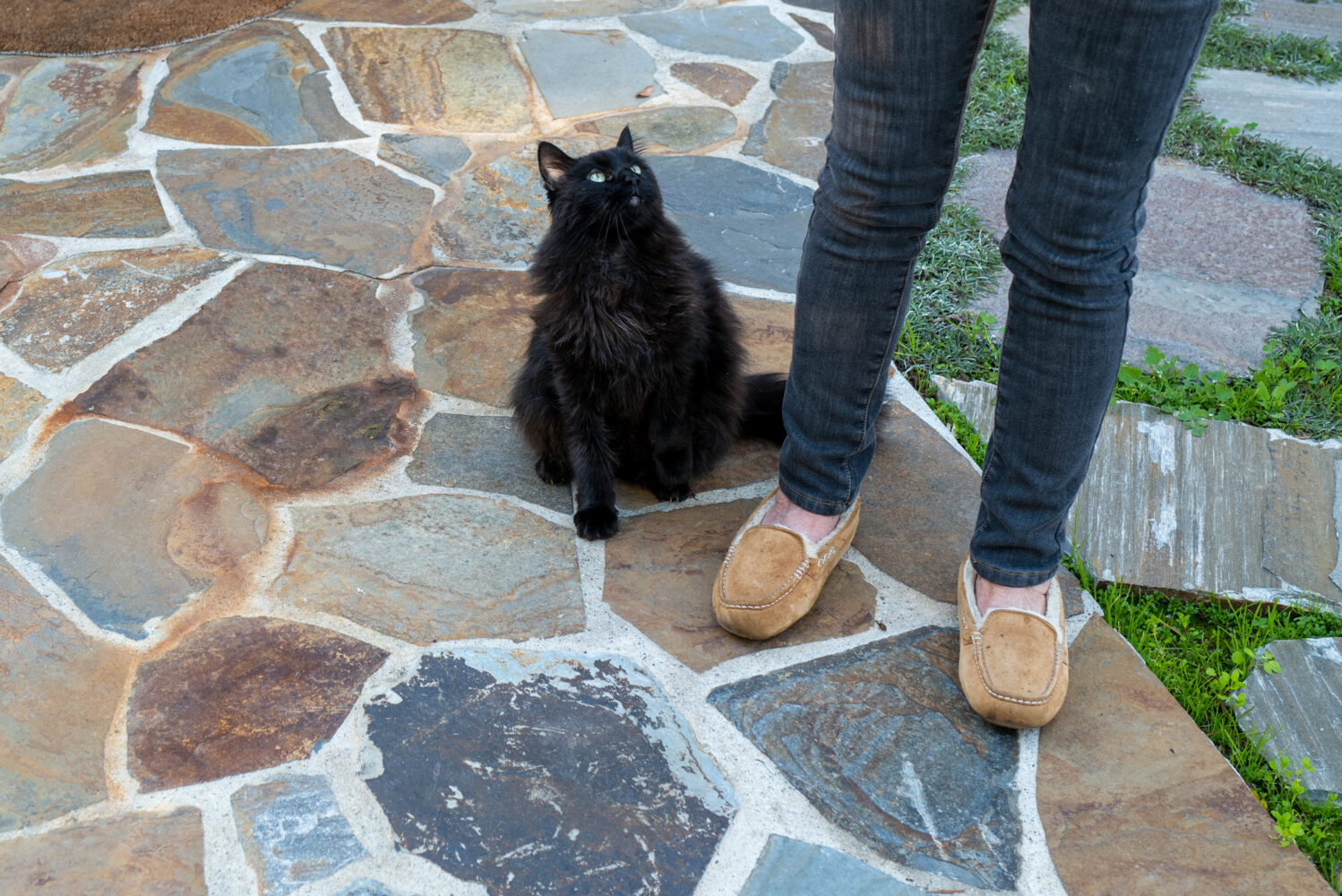
“Petri” f/3.5, ISO 125, 1/50 sec, 28mm
12. Flash sync. If, unlike me, you use flash, the leaf shutter enables flash-sync up to 1/500 sec. However, Leica Q2 does not come with a built-in flash (like the Fuji X100V). You will need your own for the hot shoe.
13. Meaningful Macro. Leica Q2 puts you in control of closeups. A ring around the lens barrel activates the feature; you can get as close as 17cm to the object. I typically use it with manual focus for precision, but auto works well, too. Macro mode is a joy to use and functions like no other camera I have ever used—other than the original Q.
14. Optical Image Stabilization. The feature is common among many cameras but, not as I understand, from Leicas—like auto-focus. The OIS built into the lens gives you about 3-stops of leeway, which is a great utility for a camera that focuses accurately in low light, while producing usable photos at high ISO.
The feature’s benefits circle back to the aforementioned topic of physical balance. Leica Q2 is hefty for a fixed-lens mirrorless compact, which risks ruined images from camera shake. My number of shaken images from this phenomenon in more than 24 months using the Q2: One. I kid you not. The amazing physical balance coupled to OIS produces sharp images easily at 1/8 sec. Granted, your subject should be still.
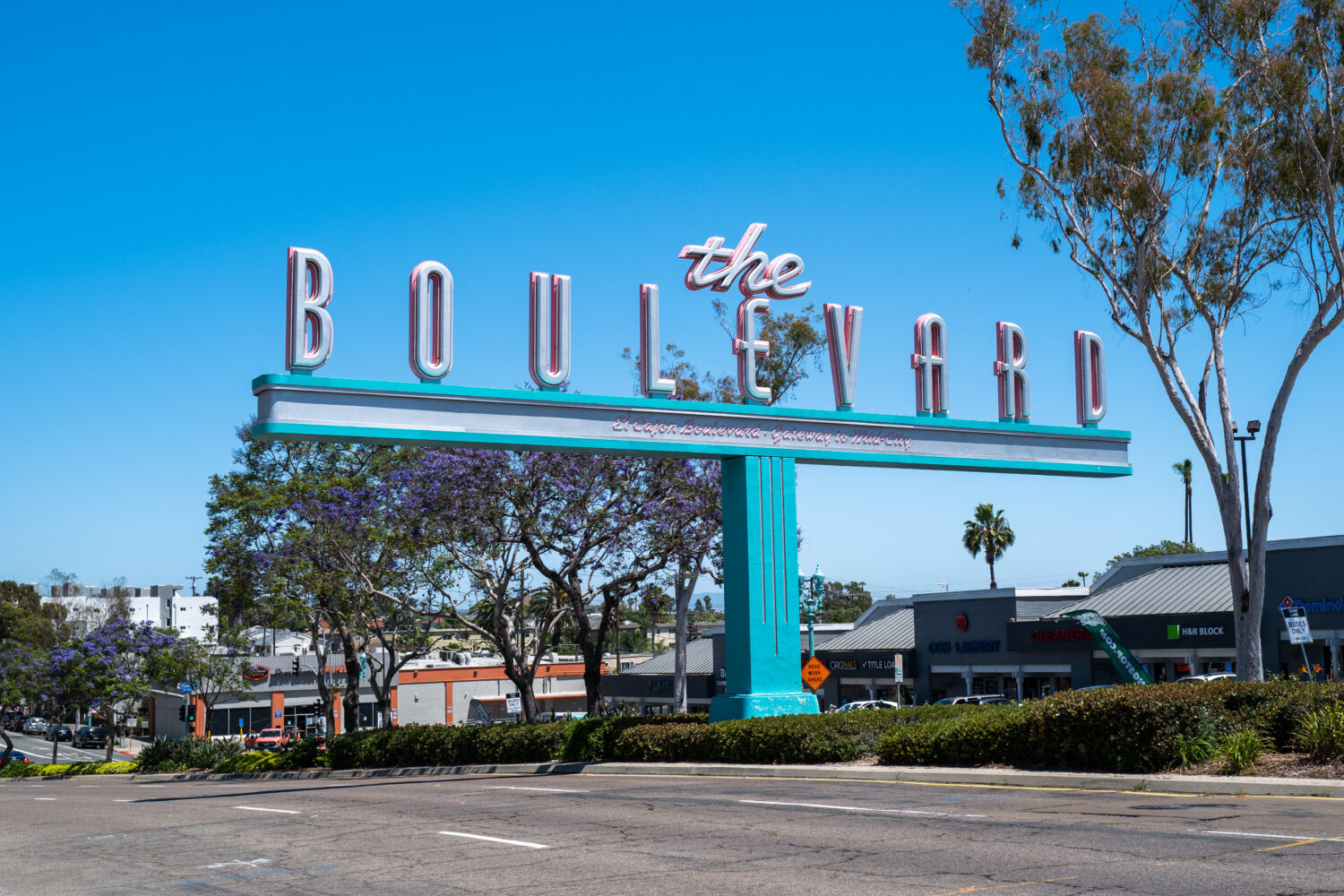
“The Boulevard” f/4, ISO 100, 1/1250 sec, 28mm
15. Low-light shooting. I don’t use flash. Ever. If there isn’t enough available light, I don’t make the moment. As such, low-light-shooting capability is a top priority. The balanced benefits of the full-frame sensor, f/1.7 Summilux lens, OIS, and high-ISO capabilities can produce satisfying shots in relatively dim ambient light.
With respect to ISO, Leica Q2 comfortably delivers up to about 10,000. But with noise-reduction applied post-production, even photos shot at ISO 25,000 are usable. Maximum: 50,000, if you dare.
That said, the newer model’s low-light performance lags the original’s.
16. RAW format. Like other Leicas, the Q2 saves files as JPEG or Adobe’s DNG (Digital Negative) format—or both together. I can open and/or manipulate DNG in more applications and on more devices than the typical camera manufacturers’ RAW files. Ubiquity and compatibly mean something. There also is a presumption, whether or not true, that there should be some post-production benefits to DNG when editing with Adobe products (like Lightroom Classic CC).
End of October 2021, I stopped shooting JPEG and DNG together after buying the 16.2-inch MacBook Pro—to conserve disk space; RAW-only now.
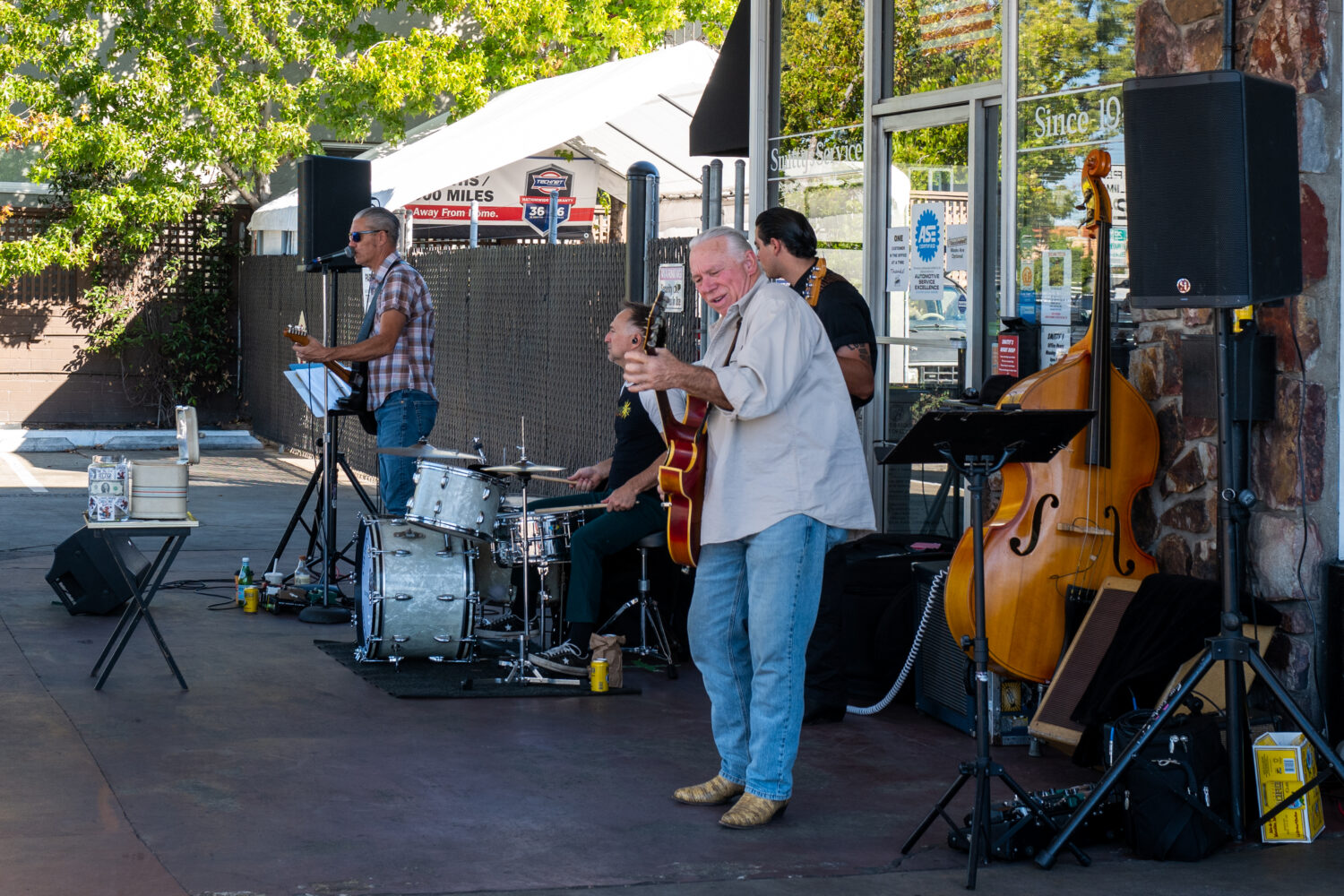
“Chickenbone Slim and the Biscuits” f/5.6, ISO 100, 1/100 sec, 28mm
17. Weather sealing. Break out the all-season gear. Leica Q2 is IP52-certified, fully weather-sealed, making it a take-anywhere camera; okay, mostly. Protection is for dust, rain, and water splashes (which I presume includes ice and snow).
18. Battery and battery life. In a delightfully beneficial ergonomic compatibility decision, Leica chose to use the same battery (BPSCL4) as the SL-series, which is handy for photo pros using Q2 alongside the interchangeable lens camera. Regardless, charge capacity is superior to the Q—so much that I can’t put a number on length other than long enough for my needs.
19. Wireless. Bluetooth LE and WiFi b/g/n are available, with wireless transfer using Leica’s FOTOS app, which comes with Lightroom integration capability. This is not a feature that appeals to me but would if at an event where I would want to shoot, edit, and post in real time.
Did I mention that FOTOS gives you some remote camera control via wireless? The capability is fun and functional.

“The Music Box” f/4, ISO 100, 1/250 sec, 28mm
20. Rear thumb indent. Many photographers will want a hand-grip, but I find Leica’s design choice to be most appropriate. A more traditional hand-grip would diminish the camera’s aesthetic charms. But if you must have one, the German manufacturer has your back—for $150.
The rear thumb indent doesn’t look like much to grab but it works for me. The camera has never once slipped from my fingers. Even if there was such mishap, Leica Q2 is always attached to the Hard Graft Atelier Hang Camera Strap that I got for Christmas 2015.
21. Lens cap. Simply stated: The thing fits over the attached lens hood, which allows me to keep on the hood all the time. That said, the lens cap tends to become loose over time, meaning it no longer snuggly fits and can fall off. I had this problem with the Q, too, and recently purchased a replacement cap for its successor.
Nitpicks
No camera is perfect, and Leica Q2’s shortcomings sting. Each of these things could go on the benefits list if improved in a successor model.
- Dial knocked out of place. Occasionally, but often enough to be bothersome, when the camera is slung around my back the shutter speed dial turns to a new position. This was a problem with the Q, too.
- Video-recording is capable of 4K, but the feature is more for casual clips than anything remotely like the camera’s photographic capabilities. I would be more inclined to use my iPhone 13 Pro for capturing video. You can laugh, but…
- The backside LCD touchscreen is good enough but not exceptional, which makes it sorely out of place on a camera where so much attention is given to minute ergonomic details. Flip-up and/or flip-out would hugely extend the panel’s usefulness, particularly for street photographers shooting from the hip.
- Flat photos. If a time machine were available, I would consider going back to December 2019 and keeping Leica Q. The original produces photos with more character and dimension than its successor—and I can’t explain why. Could it be that the new sensor packs nearly twice as many pixels onto the same surface area? I loved the images coming out of the Q but am only satisfied with those from Q2. Technically speaking, they’re sharp and balanced—but flat. They lack the 3D-like charm commonly associated with the so-called “Leica Look”.
Those are enough for now.

“Sleepy Sebastian” f/5.6, ISO 100, 1/100 sec, 28mm
Wrapping Up
To reiterate: Leica Q2 isn’t for everyone, and likely isn’t for most people. The camera is costly but could save you money over the long run. You get one lens and won’t be tempted to purchase any more, because you can’t interchange them. The single piece of glass won’t be enough for the majority of shooters, though. That’s okay. Leica Q2 is a precision instrument ergonomically designed for precise photography.
Balanced benefits and how the full-frame compact could inspire you to photograph more and do so with fresh, creative eyes. There is an aspirational quality baked into the Q family that defies explanation because it’s not strictly photography but a satisfying emotional experience. Any product’s best benefit is joy—how using the thing makes you feel. Leica Q2 feels pretty good.

